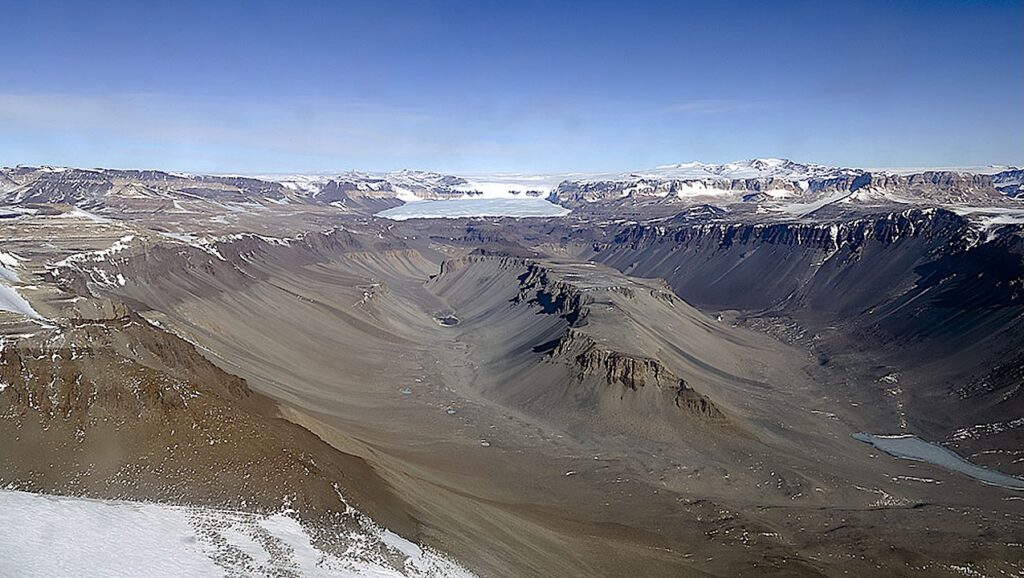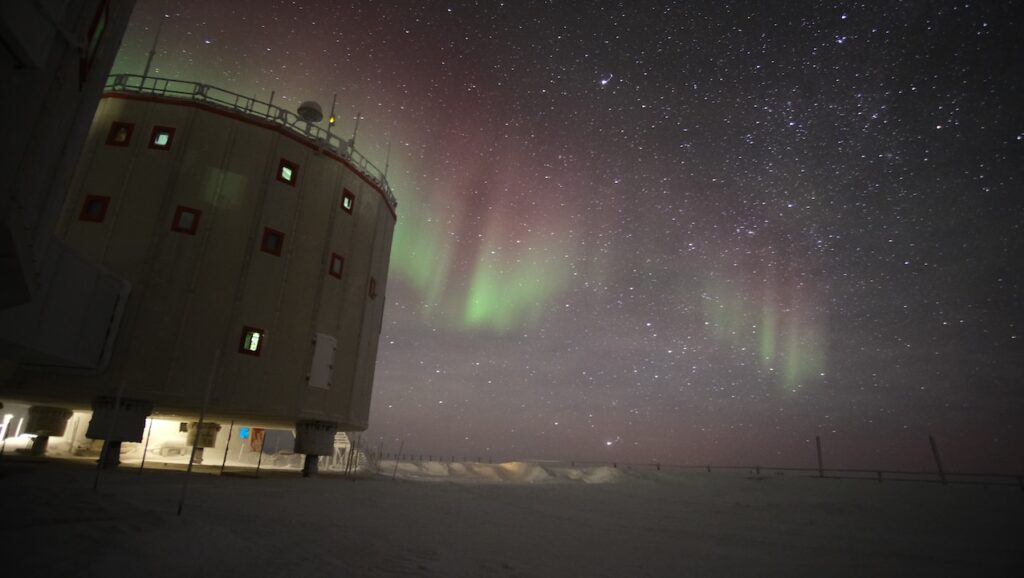Marine Mineral Formations in the Arctic Ocean Challenge Existing Geologic Theories
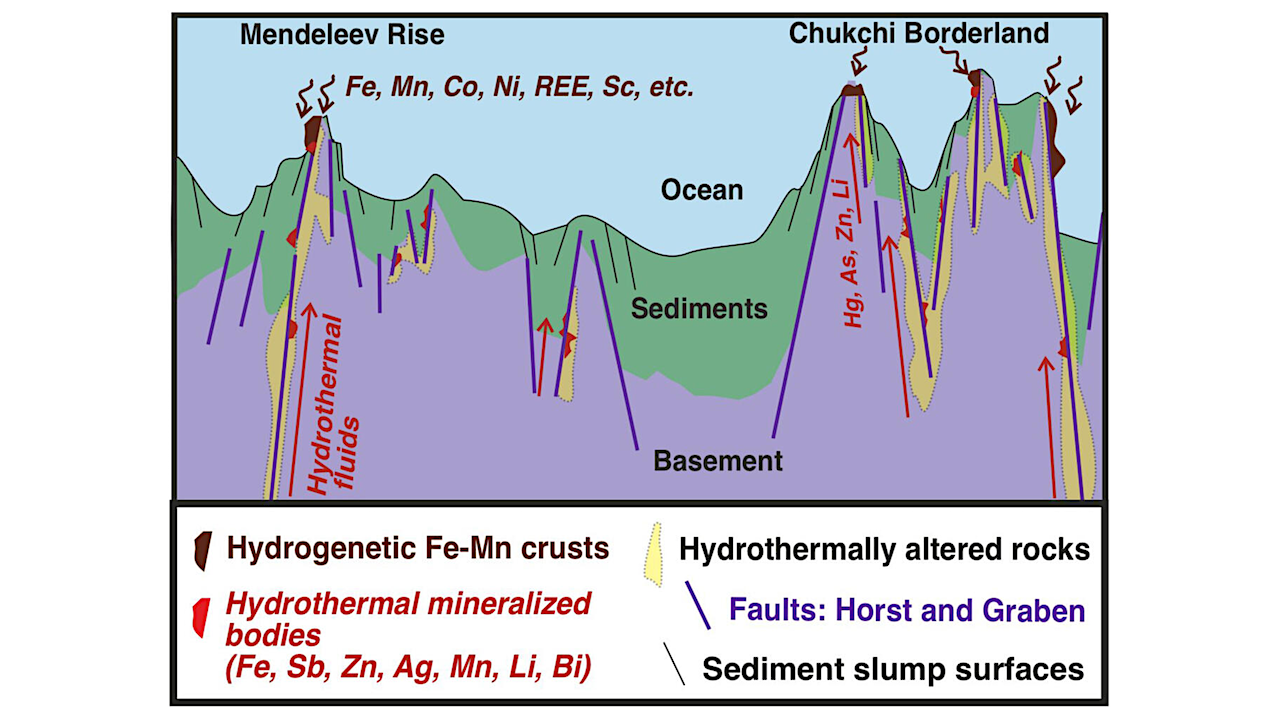
A new study from USGS describes a previously unknown process of marine mineral formation in the Arctic Ocean, driven by frictional heating along tectonic faults rather than by hydrothermal activity.
In the study, scientists analyzed hydrothermal iron- and manganese-oxide samples collected from the Amerasia Basin in the Arctic Ocean, a region crisscrossed with tectonic faults.
They found that these minerals formed in the recent geologic past, approximately 8–4 million years ago—a surprising discovery, given that no hydrothermal activity was known to occur in this part of the Arctic Ocean during this time period.
Hydrothermal activity—usually driven by seawater heated by the Earth’s internal energy—has long been associated with volcanic regions. But this new finding proposes a different process: frictional heating caused by tectonic faulting.
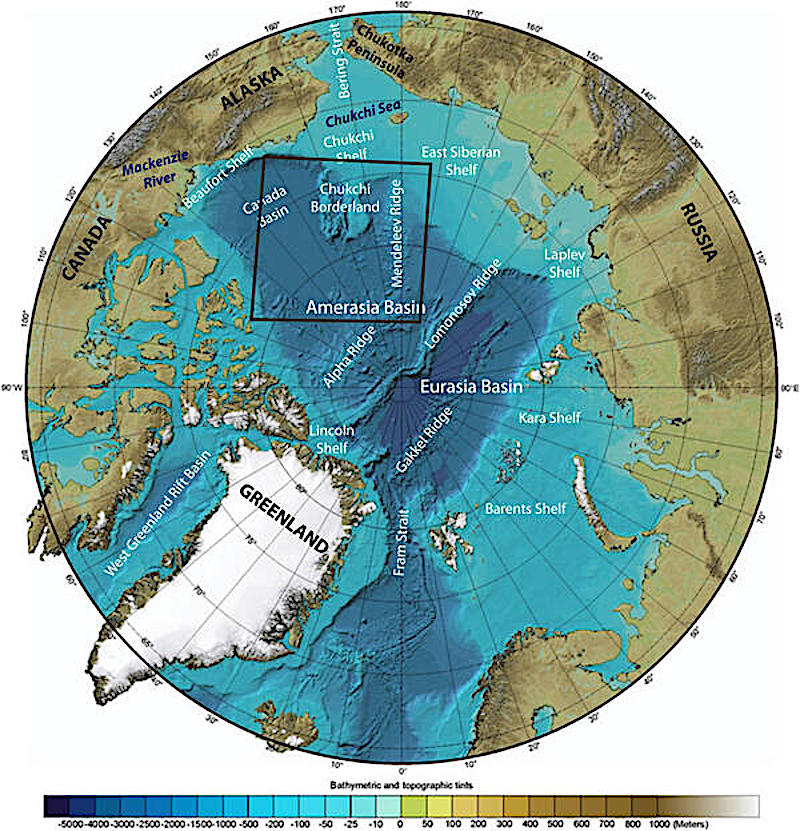
Regional location map and bathymetry of the Arctic Ocean with the study area delineated by the black rectangle. — USGS
As faults in the Earth’s crust ground against one another, the friction may have generated enough heat to drive hydrothermal fluid circulation, resulting in mineralization. The study proposes that these faults likely served as channels, allowing the heated fluids to rise and interact with ocean water, eventually forming minerals.
Not only do these mineral formations challenge previous assumptions about geologic processes in the Arctic, but their unique composition also sets them apart from other marine minerals found in the region. Differences in their mineralogy and element composition indicate they were formed under distinctive conditions, driven by specific physical and chemical interactions beneath the seafloor.
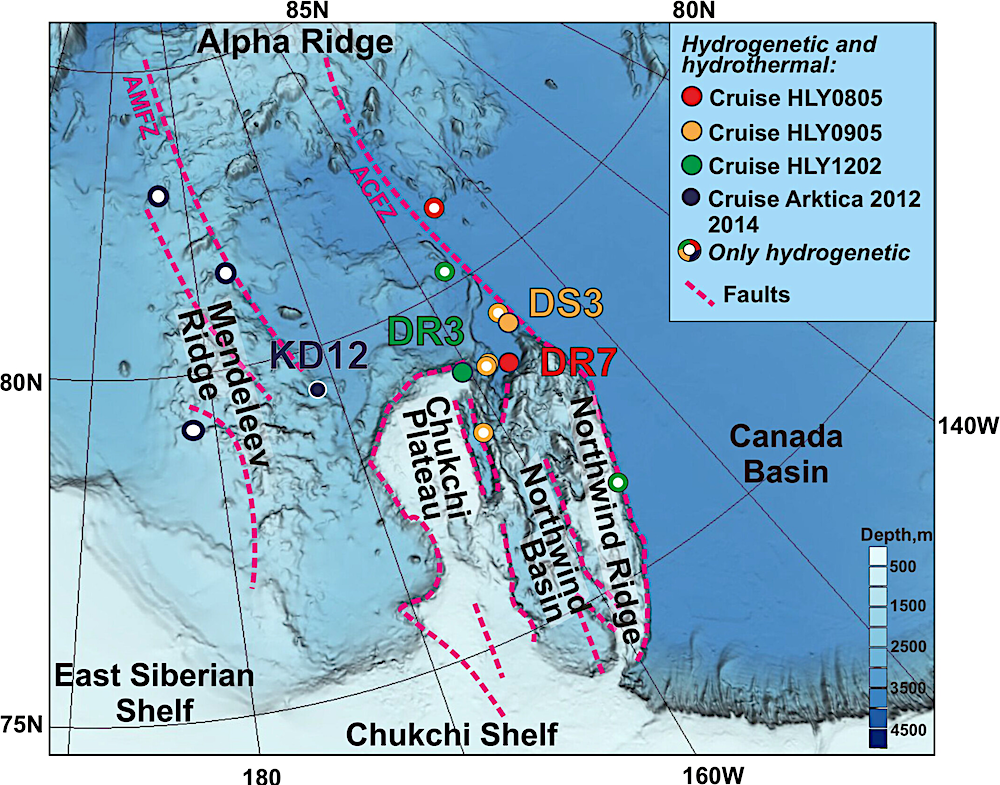
Map of the Chukchi Borderland north of Alaska, and Mendeleev Ridge, Amerasia Basin, Arctic Ocean, with 12 dredge sites from three USCGC Healy cruises and three from Russian cruises during the Arktika-2012 and 2014 projects; at dredge sites DR7, DR3, DS3, and KD12-03 (large font and filled circles) both hydrogenetic crusts studied previously (Hein et al., 2017; Konstantinova et al., 2017) and the hydrothermal deposits studied here were collected; open circles mark dredge sites where only hydrogenetic crusts were collected. The Chukchi shelf averages 41 m water depth. The Canada Basin averages ∼3,800 m. Faults and fracture zones were compiled from the literature (Arrigoni, 2008; Chernykh et al., 2018; Coakley et al., 2016; Craddock & Houseknecht, 2016; O’Brien et al., 2016; Zhang et al., 2019); ACFZ, Alpha-Chukchi Fracture Zone; AMFZ, Alpha-Mendeleev Fracture Zone. — Geosystems
“This discovery broadens our understanding of marine mineral formation, highlighting complex geological processes in the Arctic Ocean that were previously unrecognized,” said Amy Gartman, USGS Research Geologist and co-author of the study.
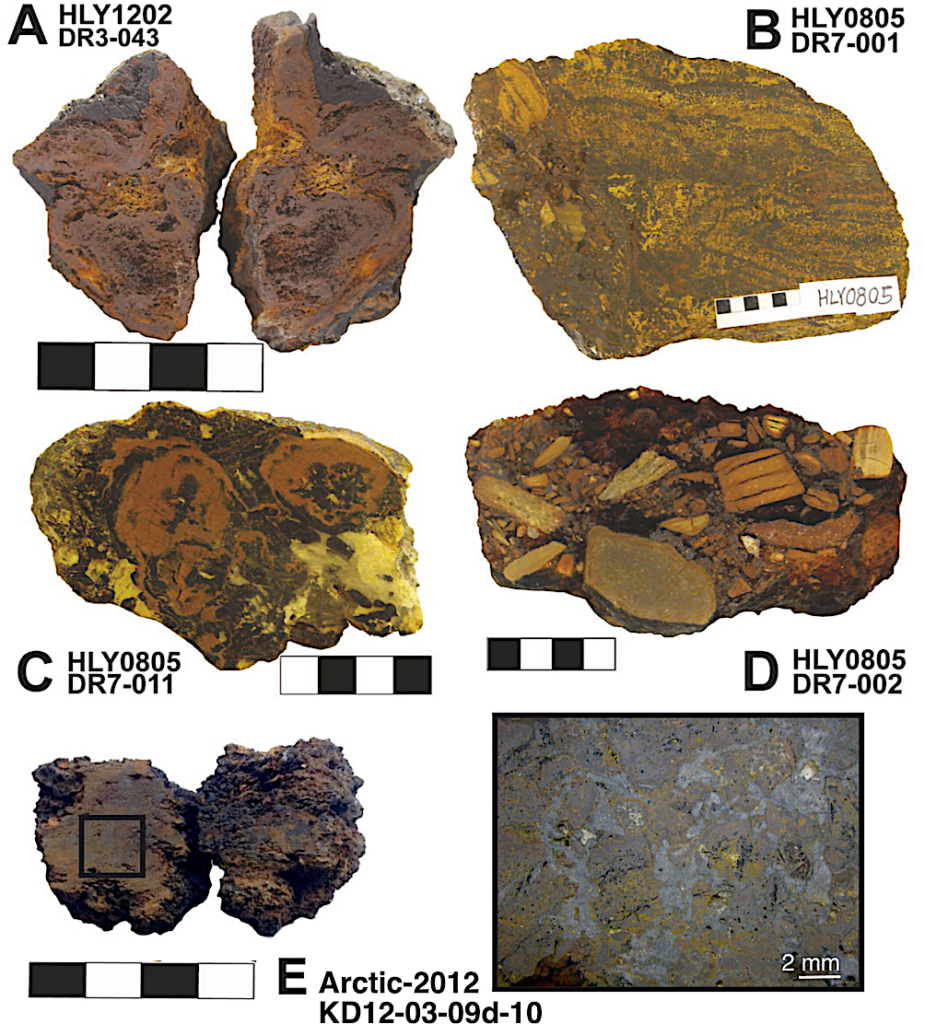
Photographs of cut surfaces showing hydrothermally altered rocks; note scale in each frame with alternating white and black centimeter divisions. (a) Sample HLY1202 DR3-043 is composed of nearly pure goethite showing a chaotic texture of massive red-brown goethite and porous yellow-brown goethite; (b) sample HLY0805 DR7-001 showing breccia comprising the left third of the sample with polygenetic clasts and gray-oxide cement; the right two-thirds is Fe- and Mn-oxides that partly replace and cement silt and clay grains; (c) sample HLY0805 DR7-011 shows a chaotic texture and is composed of clay-sized minerals (yellow-brown) and silt-sized grains in a metamorphic fabric; Fe and Mn oxides replaced and cemented grains; (d) sample HLY0805 DR7-002, breccia with polygenetic clasts and gray and black Fe- and Mn-oxide cements; (e) Cross section of sample KD12-03-09d-10 (left) and close-up (right), characterized by massive and chaotic structures composed predominantly of yellow-brown goethite and submetallic-gray Mn-oxide cements and replacement. — Geosystems
Read the study, Neogene hydrothermal Fe- and Mn-oxide mineralization of Paleozoic continental rocks, Amerasia Basin, Arctic Ocean, in Geochemistry, Geophysics, Geosystems. (open access)
Astrobiology, Astrogeology


